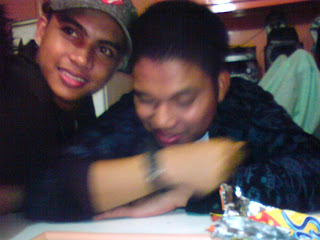 The Ultimate Iron Chef: Mario BataliPersonal History
The Ultimate Iron Chef: Mario BataliPersonal HistoryBorn in Yakima, Washington, Batali attended Rutgers University where he double majored in Spanish Theatre and Economics, graduating in 1982. He currently lives in New York City with his wife Susi Cahn (daughter of Miles and Lillian Cahn, founders of Coach Farms) and two sons, Leo and Benno. He also owns a home in Northport, Michigan. His father is Armandino Batali, owner of Salumi in Seattle.
Batali is one of the principal subjects of Bill Buford's 2006 book, Heat.
Professional careerDuring college, Batali started working as a dishwasher at "Stuff Yer Face" restaurant in New Brunswick, New Jersey.[citation needed] He quickly moved up from dishwasher to pizzaman. Batali went on to spend time as an assistant in the kitchens at the "Six Bells public house" in the Kings Road, Chelsea under Marco Pierre White,[1]the Tour d'Argent in Paris, the Moulin de Mougins in Provence, and the Waterside Inn, outside London. In 1985 he worked as a sous chef at the Four Seasons Clift in San Francisco before being promoted to helm the Four Seasons Biltmore Hotel's La Marina restaurant in Santa Barbara. At twenty-seven, he was the highest paid young chef in the company. In 1989, he resigned his post at the Four Seasons and moved to the Northern Italian village of Borgo Capanne to apprentice in the kitchen at La Volta, where he sought to master a traditional style of Italian cooking. He was inspired by the cooking of his grandmother, Leonetta Merlino.
In 1993 he opened "Po" with Steven Crane, but sold his interest in the restaurant in September 2000. In 1998, with his business partner, Joseph Bastianich (son of Lidia Bastianich), he went on to own the recent Michelin star winning "Babbo Ristorante e Enoteca". They have since opened seven additional restaurants,[2] Lupa (1999), Esca (2000), Otto Enoteca Pizzeria (2003), Casa Mono (2004), Bar Jamon (2004), Bistro Du Vent (2004, closed in 2006), Del Posto (2005), Enoteca San Marco (2007 in Las Vegas, Nevada), and B&B Ristorante (2007 in Las Vegas, Nevada) and a shop named Italian Wine Merchants (1999).
Vic Firth, known for his production of quality drum sticks, has also teamed up with Batali to create custom kitchen tools. Specifically he has designed a line of wooden rolling pins, pepper grinders and salt grinders.[3]
The New York Post reported in September 2007 that Batali's contract with the Food Network would not be renewed, and that he would no longer be featured on its Iron Chef America series. The article further reported that although Batali had not initially been dismissed from Iron Chef America, he decided not to make any further appearances on the show after the network made the decision to cancel his cooking show, Molto Mario, which had been airing on Food Network since 1997.[4] A Food Network spokesperson confirmed to ABC News that Molto Mario, would no longer be aired, but said that "Mario Batali is still part of the Food Network family. Sometimes family members go off and do other things. We completely blessed his decision to go to PBS...He is still going to appear on Iron Chef America."[5] No new episodes of Molto Mario have been filmed since 2004, but the network continued airing re-runs over the ensuing three years (with reruns currently airing on Fine Living). Batali was absent on the season finale of The Next Iron Chef, but he appeared twice during Iron Chef America's 2008 season, and his likeness has been licensed to appear in the Nintendo game Iron Chef America: Supreme Cuisine.
Batali will be starting another show for PBS with Gwyneth Paltrow, Mark Bittman (of The New York Times), and Claudia Bassols (a Spanish actress) featuring Spanish cuisine. The 13-episode series was filmed from October 2007 into early 2008. The show is titled Spain... on the road Again.[6]. This will be the first of a series of shows that will be developed for PBS over the next several years. Batali is also in negotiations with Travel Channel to develop a series on Italian cuisine and culture with Anthony Bourdain that reportedly will be an "exhaustive, definitive Italy series with the kind of production values that Planet Earth had".[7]
Television careerMolto Mario[8]
[edit] Television career
Molto Mario[8]
Mediterranean Mario
Mario Eats Italy[9]
Ciao America[10]
Iron Chef America: Battle of the Masters
Iron Chef America: The Series
ICA:All-Star Special
Mario, FULL BOIL (Special)[11]
GladWare container commercials
Emeril Live (guest appearance)
Chefography (guest appearance)
Anthony Bourdain: No Reservations (guest appearance)[12]
Spain... on the road Again (2008)
AwardsMichelin Guide to New York City; One Star
Three Stars from The New York Times for "Babbo Ristorante e Enoteca"
"Best New Restaurant of 1998" from the James Beard Foundation for "Babbo Ristorante e Enoteca"
"Man of the Year" in GQ's chef category in 1999
D'Artagnan Cervena Who's Who of Food & Beverage in America in 2001
"Best Chef: New York City" from the James Beard Foundation in 2002
"All-Clad Cookware Outstanding Chef Award" from the James Beard Foundation in 2005 (national award)










 BALULANG: Loving the Environment
BALULANG: Loving the Environment



 1. The Issue
1. The Issue
 THERE YOU GO DIRK...
THERE YOU GO DIRK... HEHE... Even my brother got boozed...
HEHE... Even my brother got boozed... emelito was once again a victim...
emelito was once again a victim... creepy pictures of emelito and pery...
creepy pictures of emelito and pery... GOOD THING... I ROCK AND NOT BOOZED!
GOOD THING... I ROCK AND NOT BOOZED!